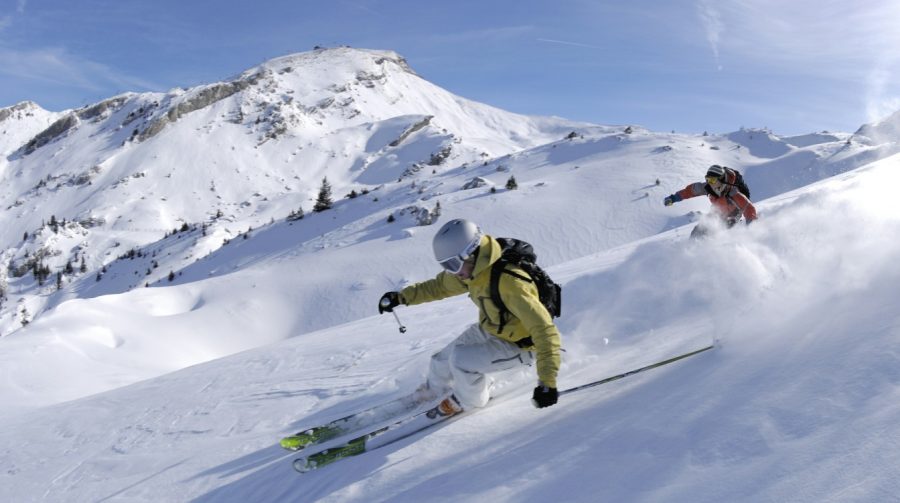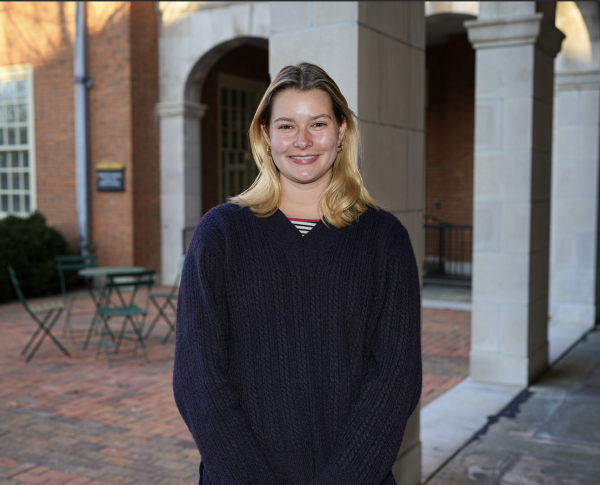Skiing: A slippery slope
Snow shortages impact a spring break favorite
A family of skiers race down a mountain.
March 14, 2023
For Wake Forest students who enjoy winter sports such as skiing or snowboarding, this annual hobby may soon turn into a once-in-a-while luxury — snow is in short supply.
“Sometimes I have friends post joking photos on a ski lift of the ground because there is no snow on the ground, and it almost looks like it could be summer,” senior Kate Smith said.
The controversial solution: making artificial snow.
According to an article from Recreational Equipment, Inc.“All about Artificial Snow,” artificial snow uses heavy amounts of water and chemical additives to create a real snow feel. Artificial snow is used at ski resorts where getting an adequate amount of real snow is not guaranteed.
According to WUNC , a North Carolina public radio station, the first snow-making machine was made in 1952 and implemented at a ski resort in New York. The manufacturers said, “[artificial snow] is no longer a luxury but an absolute necessity for our winter operation.”
It continues to be a necessity today as Earth’s global surface temperature continues to rise. According to NASA, the year 2020 was the hottest year to date.
REI’s article states that 95% of world ski resorts use snowmakers and that an estimated 200,000 gallons of water are used to cover a single acre with a foot of snow. Additionally, two-thirds of a ski resort’s energy goes toward snowmaking, according to REI.
Where does this energy come from? Fossil fuels.
According to USA Today, fossil fuels release greenhouse gasses like carbon dioxide that act as a blanket and trap heat in our atmosphere, contributing to global warming.
Junior Emily Craig was an alpine ski racer in her hometown of Steamboat Springs, Colo. Growing up, she saw the climate crisis affect her ski season firsthand.
“We would ski from October through November,” Craig said. “In more recent years, we’ve had to push this back because there would be no snow…and each year there would be another snow machine going.”
Craig contemplated skiing in North Carolina, but after seeing Outdoor Pursuits post the barren slopes on Instagram, she decided just to ski when she was home.
Ricky Maleczka is a sophomore at Wake Forest and an avid member of Outdoor Pursuits, the Campus Recreation offshoot that runs ski trips in the area for students. About a month ago, Maleczka led a group of 20 students to a ski hill in West Virginia.
When asked how the snow was, Maleczka responded, “Most of it was man-made snow, but while we were driving up, we went up in elevation, and it started to snow here and there.”
This past weekend, Maleczka was supposed to return to the same resort to lead a new group. However, due to the lack of snow and warm temperatures, he canceled the ski trip.
Junior Andrew Calfa took a ski trip with friends to Sugar Mountain, N.C. in December.
“The snow was terrible — it was mostly ice, and it had snowed the night before,” he said. “You can tell that the snow base wasn’t deep, and you can tell they were making a good bit of manmade snow.”
With the burning of fossil fuels warming our atmosphere, snowfall will not occur as frequently as it once did, according to the EPA.
The downside of artificial snow isn’t just that it lowers the probability that real snow will fall the next year. It also causes a noticeable difference while skiing.
“There is a huge difference…the snow is stickier because it is the frozen water, and it isn’t the soft and fluffy actual snow,” Maleczka said. “This makes it hard to turn as it clumps underneath your skis.”
The probable solution: renewable energy.
Renewable energies do not create greenhouse gas emissions as burning fossil fuels does. Brian Cohen, the Assistant Direction for Sustainability Engagement at Wake Forest, believes that implementing this type of energy will mitigate the effects of global warming.
“Renewable energies are the number one solution….In mountainous areas, we must look for opportunities for solar energy or wind energy” he said.
As Cohen suggests, to make progress and regain our once naturally snowy slopes, sustainability is a step in that direction.















